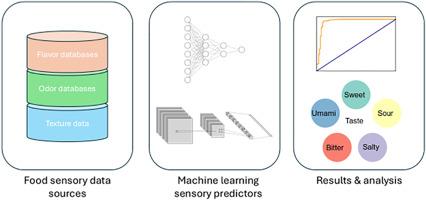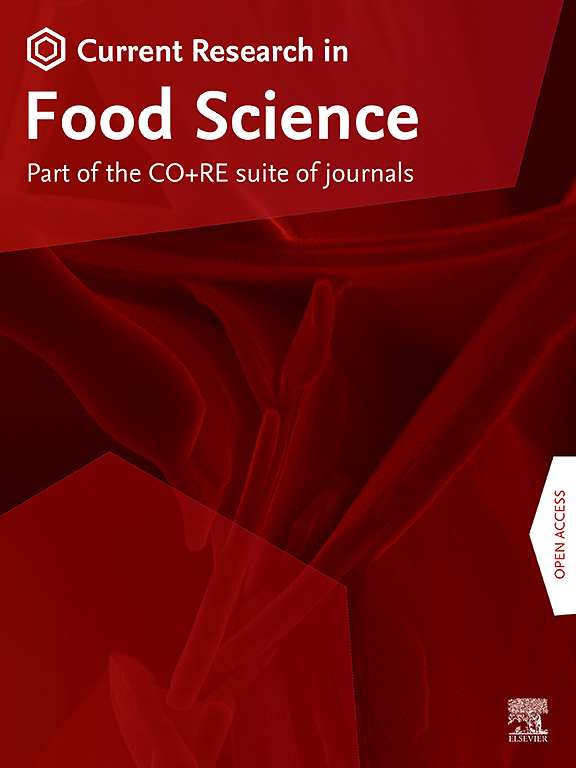预测食物风味和质地的数据和模型的系统综述
IF 7
2区 农林科学
Q1 FOOD SCIENCE & TECHNOLOGY
引用次数: 0
摘要
这篇综述系统地研究了预测食物风味和质地的数据资源和计算模型的现状。味觉是最明确的感官成分,分子分类与五种基本味觉一致:甜、酸、苦、咸和鲜味。气味预测虽然有相似的前提,但由于可检测到的气味种类繁多,缺乏标准化的嗅觉指标,因此面临着更大的挑战。机器学习模型,包括图神经网络和深度学习方法,在识别味道和气味化合物方面显示出了希望。质地预测的研究兴趣相对较少,但可能证明在食品质量控制管道中有影响,尽管在创建健壮的食品质地数据集方面需要做更多的工作。该评论强调了支持预测模型开发和基准测试的专业数据库的日益可用性。尽管最近取得了进展,但在绘制感觉空间和整合受体水平数据方面仍然存在差距。未来的方向包括创建更广泛和高质量的数据集,提高模型的可解释性,并探索在食品设计,香料,制药和环境监测方面的创新应用。这项工作为旨在推进风味和质地预测领域的研究人员提供了一个全面的资源。本文章由计算机程序翻译,如有差异,请以英文原文为准。

A systematic review of data and models for predicting food flavor and texture
This review systematically examines the current landscape of data resources and computational models for predicting food flavor and texture. Taste is the most well-defined sensory component, and molecular classification is aligned with the five basic tastes: sweet, sour, bitter, salty, and umami. Odor prediction, while similar in premise, faces greater challenges due to the vast and diverse range of detectable odors and a lack of standardized olfactory metrics. Machine learning models, including graph neural networks and deep learning methods, have shown promise in identifying taste and odor compounds. Texture prediction has seen comparatively less research interest but may prove to be impactful in food quality control pipelines, although more work is needed in creating robust food texture datasets. The review highlights the growing availability of specialized databases which support the development and benchmarking of predictive models. Despite recent advancements, gaps remain in mapping sensory spaces and incorporating receptor-level data. Future directions include creating more extensive and high-quality datasets, improving model explainability, and exploring innovative applications in food design, fragrance, pharmaceuticals, and environmental monitoring. This work provides a comprehensive resource for researchers aiming to advance the field of flavor and texture prediction.
求助全文
通过发布文献求助,成功后即可免费获取论文全文。
去求助
来源期刊

Current Research in Food Science
Agricultural and Biological Sciences-Food Science
CiteScore
7.40
自引率
3.20%
发文量
232
审稿时长
84 days
期刊介绍:
Current Research in Food Science is an international peer-reviewed journal dedicated to advancing the breadth of knowledge in the field of food science. It serves as a platform for publishing original research articles and short communications that encompass a wide array of topics, including food chemistry, physics, microbiology, nutrition, nutraceuticals, process and package engineering, materials science, food sustainability, and food security. By covering these diverse areas, the journal aims to provide a comprehensive source of the latest scientific findings and technological advancements that are shaping the future of the food industry. The journal's scope is designed to address the multidisciplinary nature of food science, reflecting its commitment to promoting innovation and ensuring the safety and quality of the food supply.
 求助内容:
求助内容: 应助结果提醒方式:
应助结果提醒方式:


